by Steve Selden | Feb 8, 2018 | Churchill News

Rankin Inlet in a deep freeze of -60C a couple of days ago. Susan Enuaraq photo.
Rankin Inlet, Nunavut gets cold in the winter. Located on the northwestern shore of the Hudson Bay at 62 degrees and between Chesterfield Inlet and Arviat, the town is definitely in a remote yet exposed region. Weather is just a part of life and recently the weather has been colder than cold.
Schools in the south get “snow days” though when you get to the 60-degree latitudes school closures are “cold days”…usually accompanied by some snow as well. When temperatures fall to -60C with the windchill or more than just about everyone will stay home and not risk going outside and expose skin. For the past few days, schools have cautiously remained closed.
“I don’t remember the last time we actually closed due to weather. This is a bit of an extreme,” said Mike Osmond, chair of the Rankin Inlet District Education Authority.
Temperatures are getting to –40 C before the windchill and when the winds are factored in, it feels colder than –60 C.
“You’ve got blustery winds with some of the coldest temperatures that people have ever experienced,” said David Phillips, senior climatologist with Environment Canada, adding that his charts say skin freezes in two minutes at –55 C.
Windchill was expected to reach above -65C in the past couple of days and we are watching the area closely to see how the community fairs with the dangerous cold. Blame for the almost 15 degrees colder than normal temperatures is being placed on the polar vortex, a combination of an aggressive weather system and frigid air temperatures.
Elders in the Arviat and Rankin region are advising native hunters to remain home until the chill breaks. Living on the land in the past didn’t have this luxury as they had to scavenge for food in even the most dangerous conditions. Grocery stores in these communities of nearly 2,500 people now allow for a community to survive the winter and feel secure in the far north. These towns in the remote northern region do pay high prices for this luxury but there is no other way to survive as a flourishing community.
However, now that people can go to the grocery store, they don’t have to risk their lives hunting in extreme temperatures. Replacing cultural traditions, however, can sometimes be hard for natives to the region used to living off the land and some have gotten themselves into risky situations.
December through February is the coldest time of the year in Rankin Inlet and the urge to get outdoors is always there. However, for many just relaxing inside until the treacherous temperatures rise is sometimes a matter of life or death!
by Steve Selden | Mar 10, 2017 | Churchill News
Environment Canada defines blizzard conditions as visibility is less than 400 m resulting from blowing and/or falling snow for a minimum of four hours. Well, Churchill endured these conditions and more for over 56 hours and now the digging out begins.
Between 9 a.m. Tuesday and 5 p.m.Thursday the town and region was under siege from mother nature’s wrath and was under full blizzard conditions. Now the town looks like the north pole. Wind and frigid conditions have prevailed hindering clean – up efforts and it will be awhile before the town is functioning normally.
Peak gusts of 105 km/hr kept the town at a standstill with only the health center open after the loading dock was cleared and used as an entrance for patients. As usual in Churchill, snowfall will be hard to measure within town limits as the wind gusts move the snow into massive drifts. More accurate measurements can be found in the boreal forest but hard to reach for sure.
These photos are pretty unbelievable and are the most snow we have seen from one system in decades! What a ride the last few days have been for all the hearty Churchillians! We should be getting some epic northern lights shots within the next week with unique snow formations in the frames.
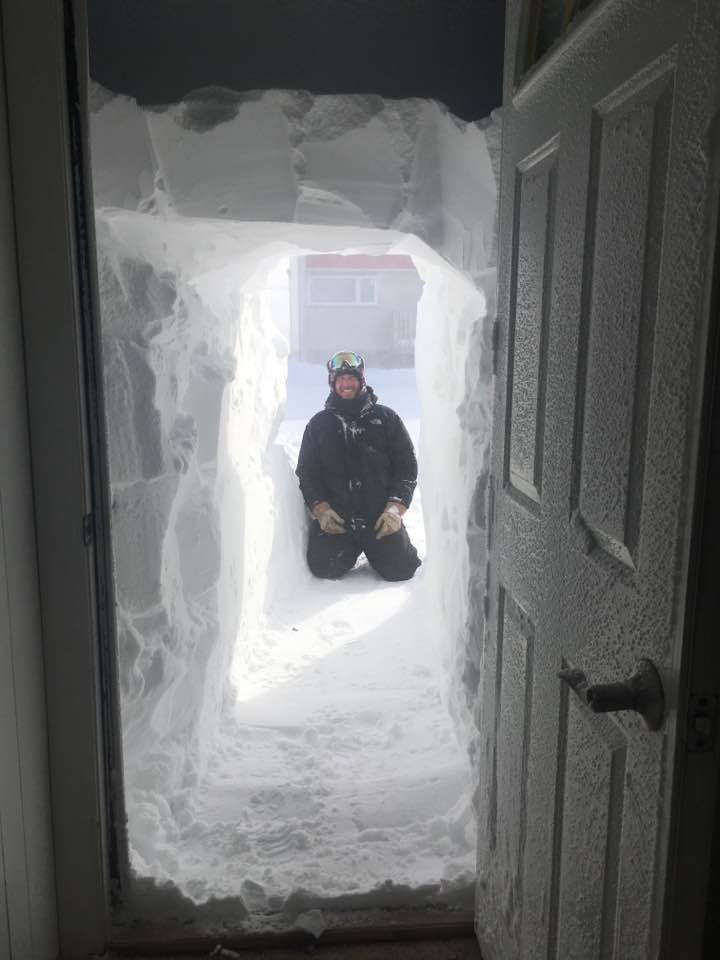
An eight-foot tunnel of snow to get into the house! Kelly Turcotte photo.

Churchill’s loader clearing the streets finally. Jodi Grosbrink photo.

No way out of the human door even. Jodi Grosbrink photo.
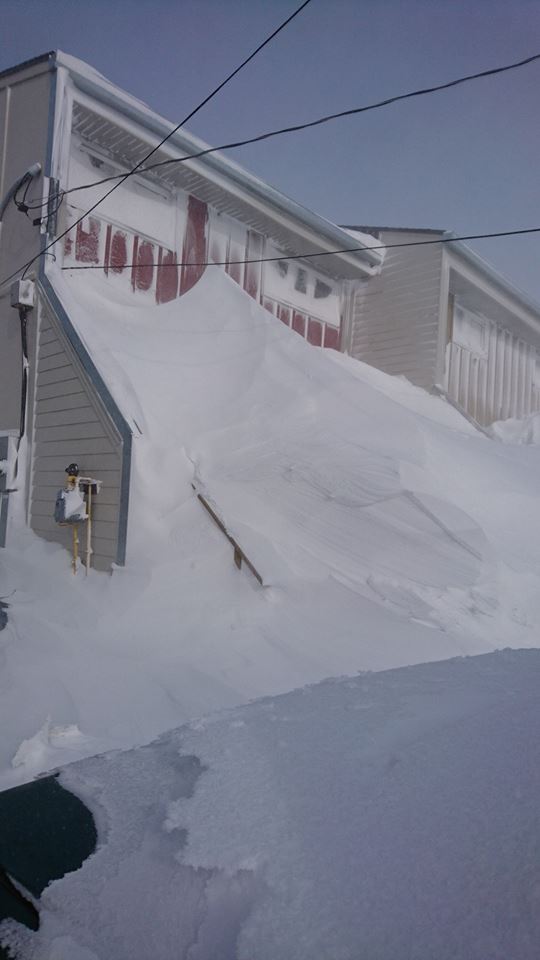
Snow piled up in Churchill all the way to second story of apartments. Jodi Grosbrink photo.
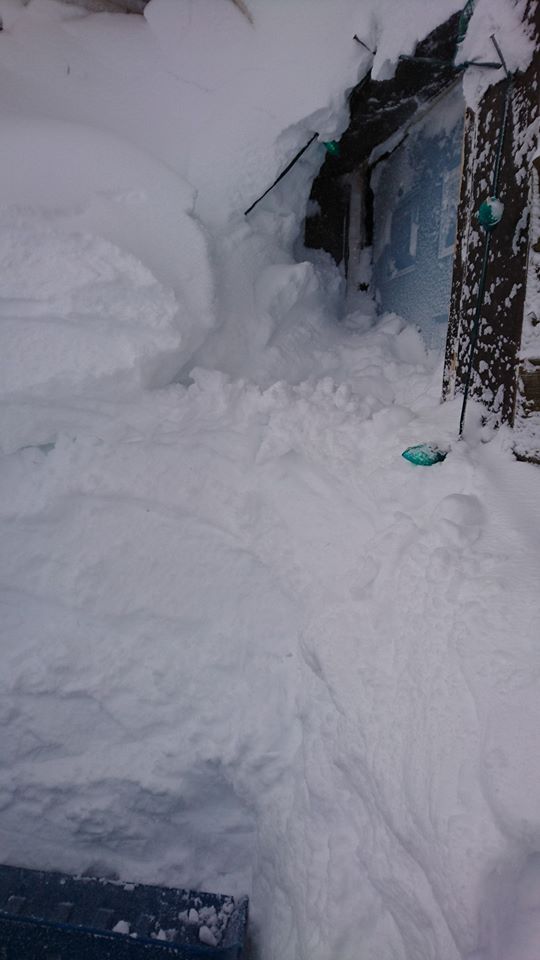
Churchill is surely snowbound. Jodi Grosbrink photo.
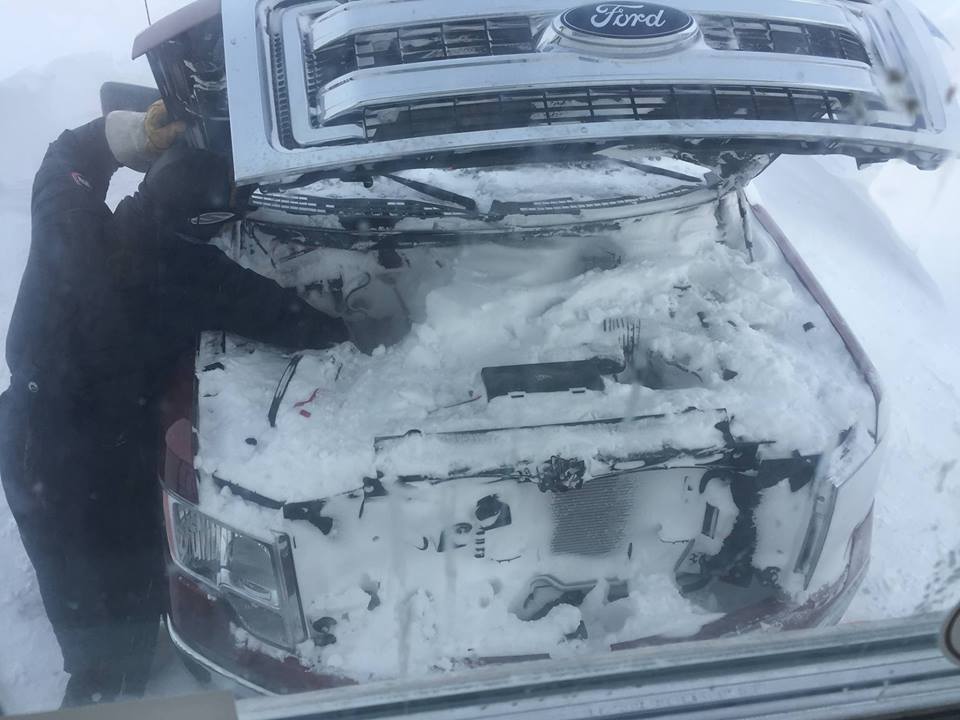
Engine compartment of a Churchill vehicle. Belinda Fitzpatrick photo.
by Steve Selden | Feb 17, 2017 | Conservation
A 2016 Scientific Working Group report on two Arctic sub – populations was released last week and appeared to confirm what local Inuit have been seeing over many years. Polar bear populations in Baffin Bay and Kane Basin are considered stable and not declining as Polar Bear Specialist Group scientists previously claimed.
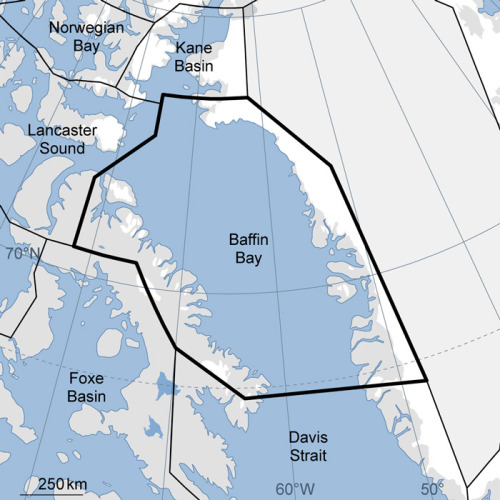
The IUCN Polar Bear Specialist Group had previously designated the two sub – populations to be in decline mostly as a result of over – hunting. The same regions were assessed by Environment Canada in 2014 and termed ‘data deficient” for Kane Basin and ‘likely declining’ for Baffin Bay.

The new report suggests the global population estimate should be adjusted to the plus side and the 2015 IUCN Red List also be revised. Currently the only sub – population to hold the ‘likely declining’ label is the Southern Beaufort region. With the new data at hand the global population size should rise from 22,000-31,000 (as designated by 2015 IUCN Red List) to 22,633-32,257 polar bears worldwide. This estimate is not including the surprising 42% increase in the Svalbard area of the Barents Sea sub – population. In 2015 975 polar bears were counted in that region nearly 300 more than the 685 counted in 2004.
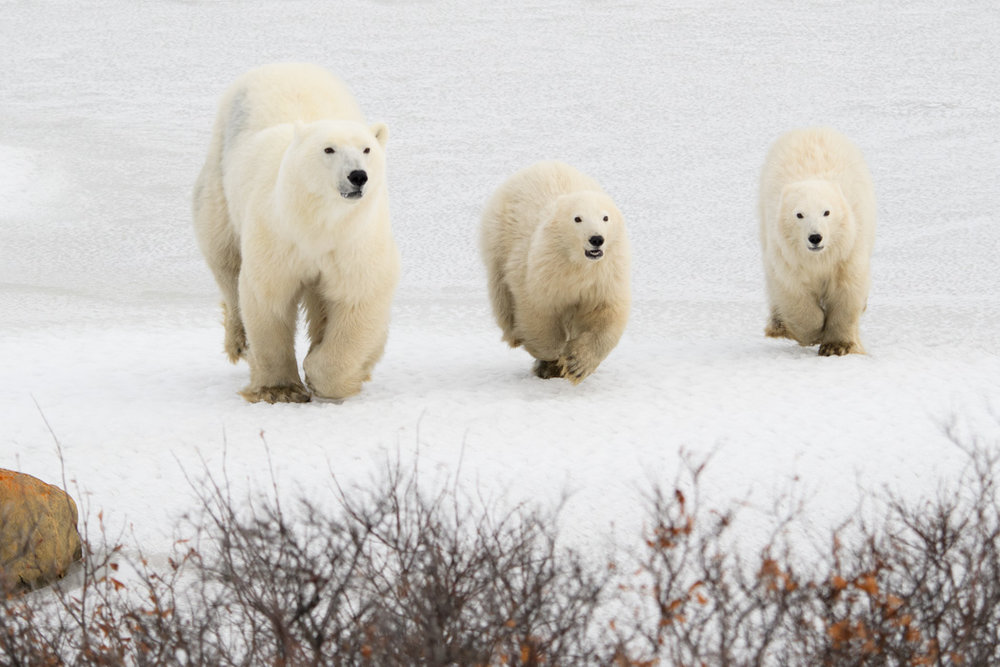
Polar bears on the run to safety. Jeff Klofft photo
In the wake of continuous dark news regarding Arctic ice decline, this news, at very least, is encouraging from a species perspective. With action and continued conservation efforts from groups such as World Wildlife Fund, polar bears and the Arctic can be protected well into the future.
by Steve Selden | Jan 20, 2015 | Churchill News
Below freezing temperatures have blown in from the north across the Hudson Bay and settled into the Churchill region lowlands. The snow covered tundra and stunted spruce trees are frosted over and the land has fallen into a deep hibernation for the remainder of winter.
The extended forecast will make most people shiver though in the north they tend to adjust to the cold once it becomes a daily norm. Take a look at the short – term outlook at this Environment Canada website.

Winds and cold temperatures in Churchill. Brad Josephs photo.
With the cold comes general good visibility this time of year. This is the reason, coupled with the higher solar flare activity, that February and March are optimal months for northern lights viewing around the polar regions. In these months the axis of the earth is slightly more aligned with the sun’s axis producing more auroral bands in the region.
The extensive number of clear nights with the occasional winter blizzard make for incredible
northern lights viewing and photography. Extended hours of darkness provide greater opportunities for aurora viewing as well. The snowy landscape enhances the scenes with reflective light. Even half to full moons during these months make for some unique lighting on the landscape and also the chance to get some great photos of the lights and moon together. This is the time to see northern lights in Churchill!

Photography of the northern lights has become a passion in the north. Brad Josephs photo.
Want to see northern lights in Churchill? Check out nathab.com today!














